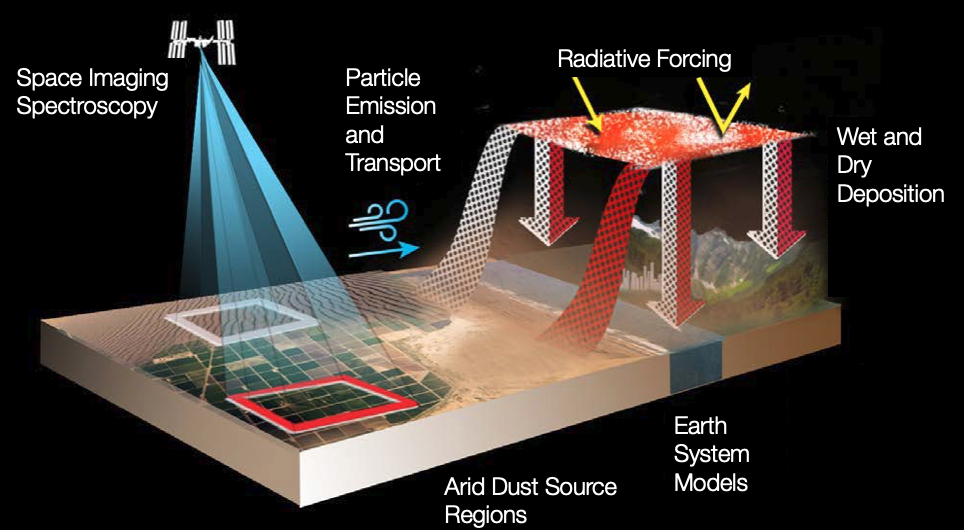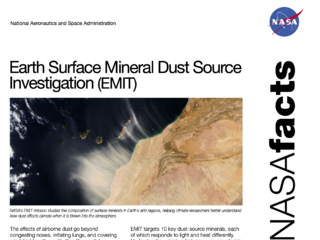
When strong winds on one continent stir up mineral rock dust (such as calcite or chlorite), the airborne particles can travel thousands of miles to affect entirely different continents. Dust suspended in the air can heat or cool the atmosphere and Earth's surface. This heating or cooling effect is the focus of NASA’s Earth Surface Mineral Dust Source Investigation (EMIT) mission.
Mineral dust has many other effects on our planet. It can help form clouds or change atmospheric chemistry. When the dust settles in water or on land it can provide nutrients for ecosystem growth. If it falls on snow or ice, mineral dust can increase sunlight absorption and accelerate melting. Mineral dust in the air can reduce visibility or harm human health.
Scientists know that most of the mineral dust transported in Earth’s atmosphere comes from arid, or dry, regions around the globe. But they aren’t certain what types of minerals the wind carries from those regions. Different minerals affect the environment in different ways. So scientists need to know what minerals are in dust source regions if they’re going to better understand how the dust is affecting the Earth. EMIT will provide this missing dust source information.
The data will allow scientists to create a new mineral map of Earth’s dust-producing regions. The map will improve computer models that scientists will use to assess the regional and global heating and cooling effects of mineral dust today and in the future.
EMIT was developed at NASA’s Jet Propulsion Laboratory and launched on July 14, 2022. The instrument will observe Earth from outside the International Space Station. Once it begins operation, EMIT data will be delivered to the NASA Land Processes Distributed Active Archive Center (DAAC) for use by other researchers and the public.
Robert O. Green is principal investigator of EMIT and a senior research scientist at the NASA Jet Propulsion Laboratory.

